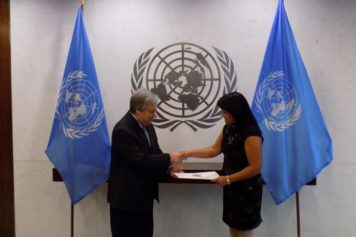
Some children reported they were approached with the promise of education and jobs, the UN said. [EPA]
In a report to the Security Council circulated this week, the UN chief said al-Shabab used children in combat, with 9-year-olds reportedly taught to use weapons and sent to frontlines. Children also were used to transport explosives, work as spies, carry ammunition or perform domestic chores, Guterres said.
It was estimated that more than half of al-Shabab’s force are children and at least 60 percent of the group’s “elements” captured in Somalia’s semi-autonomous Puntland region in March 2016 were youngsters. Some of those children said they were approached with the promise of education and jobs, he said.
Somalia has been trying to rebuild after recently establishing its first functioning central government since 1991. However, the country is driven by clan rivalries and threatened by al-Shabab fighters opposed to Western-style democracy.
While al-Shabab is the main perpetrator, the report said the Somali army and other groups also recruited and used children. According to the report, a task force in Somalia verified the recruitment and use of 6,163 children — 5,993 boys and 230 girls — during the period from April 1, 2010, to July 31, 2016, with more than 30 percent of the cases in 2012. Al-Shabab accounted for 70 percent, or 4,213, of verified cases, followed by the Somali National Army with 920 children recruited, it said.
Guterres said he was “deeply troubled by the scale and nature of grave violations against children in Somalia and their increase since 2015.”
He urged all parties in the conflict in Somalia to stop recruiting children and committing violations against them and to abide by international humanitarian and human rights law.
Read more here
